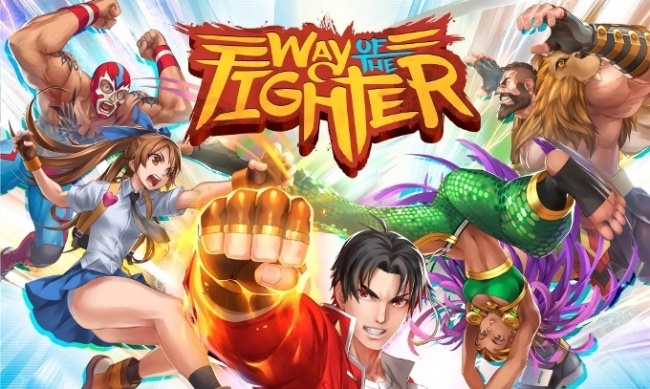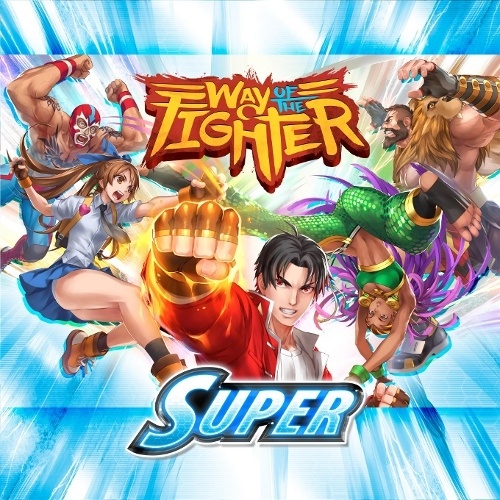Way of the Fighter: Super
Publisher: Ninja Division
Release Date: February 14, 2017
Price: $50.00
Game Designer: Benjamin Yamada
Format: Board Game
Number of Players: 2 (4 if combined with Way of the Fighter: Turbo)
Playing Time: 30-60 minutes
Product #: NJD040101
Age Rating: 14 and up
ICv2 Rating: 2.5 Stars out of 5
It’s been a while since I’ve seen a video arcade, much less been in one. So it was with a bit of nostalgia that I approached Ninja Division’s Way of the Fighter, a card and dice game apparently inspired by arcade "fighting games" like Karate Champ, Mortal Kombat, and, of course, Street Fighter. But could it capture the feel of rapid-fire kung-fu fighting that existed only in those old arcade machines?
Summary: Each player is a fighter with supernatural powers recruited to compete in global tournaments. But that isn’t what the game is really about: beating the ever-loving stuffing out of your opponent as fast as you can. To do that, you use your hand of cards, each depicting a martial arts maneuver, with a grid that determines whether you hit your opponent—based on their location and movement—and the damage and other effects it can inflict. Moves can even be "chained" together to form devastating combos, if you can pull them off: each chained move has to be faster than the one that came before it.
And speed is the name of the game here. Only the first player to score a hit each round gets to actually do anything that round. Their opponent, presumably stunned, forfeits the action they were planning and does nothing but stagger under the onslaught. This is where the dice side of the game comes in: You manage your pool of dice, representing the energy of your fighter, rolling up to four dice each round to determine how fast your actions are, with the faster move getting the first chance to strike.
Originality: Way of the Fighter forces you to balance a number of things, and here lies the interesting aspect of the game. Drawing together a pinch of hand management, a bit of resource management in the form of the energy dice pool, some tactical movement, and careful planning of combos, the game requires a lot more thought than the old button-masher games of the video arcade. Despite that, the play actually does a fair job of capturing the feel of the arcade. Once the rules are mastered, turns play quickly, the maneuvers feel authentic to the theme, and the sense of elation when you pull off a move (or despair as you sit there helplessly watching your fighter get pummeled) is just as real. I also particularly like the way that fighters gain energy as they take damage, providing a built-in catch-up mechanic so you never feel completely out of the match until the end.
Presentation: The box is a brightly-colored affair with a riot of dynamic action featuring all five fighters included in the box. Definitely eye-catching. The artwork is all done in a sort of Japanese manga/video game style that fits the theme perfectly. The back has a nice description of the game and a shot of the components. On the other hand, the box is cavernous, considering what’s inside it, with the components not even close to filling half the space. Now presumably, the intent was to allow players to store the components from both Way of the Fighter sets in one box, but there’s still a lot of air in there.
Quality: The components are good, however. Cards are nice and flexible. It took a bit of practice to get the hang of how to read them, but once you do (and memorize the rather lengthy list of keywords), they provide all of the information you need to play them. The double-sided board is excellent, with good manufacturing and good use of color. The layout could have been a bit better organized (we had problems keeping our dice pools separate from our life counters—both of which are sets of dice), but it’s a problem easily overcome. The tokens and counters are nice, thick cardboard. Sadly, the dice are printed, not molded, which may limit their life expectancy somewhat, but at least the 12mm size and rounded corners make them feel nice in the hand and you can easily hold a bunch of them. Surprisingly, considering Ninja Division’s history, they went with nicely printed standees in lieu of plastic minis. But somehow I think they work better here: the fighters in the arcade were 2d, too!
Marketability: I don’t know how much nostalgia for dark and noisy arcades there is, but anybody who was a fan of those old fighting games owes at least a look at Way of the Fighter. However, I’m concerned about the price point and the size of the box compared to what you get inside. I fear that some potential fans are going to be turned off by that. Being a two-player game is also a hurdle the game will need to overcome, but at least that is offset by the team play rules that players can use by combining Super and Turbo together.
Overall: Way of the Fighter is very flashy and pretty. The graphics are great, the mechanics have a lot of promise, and the game feels true to its genre. But to me it feels too long and the mechanics a tad too "fiddly" for the game to really offer the lightning-quick experience I was looking for. The all-or-nothing nature of the strike mechanic makes speed paramount, giving a big advantage to the player who has the initiative and in general leaving their staggered foe feeling frustrated. This has the unfortunate side effect of pushing players to narrow their strategy to those moves that are fast enough to have a reasonable chance of actually going off.
It’s true that more experienced players are likely to find ways to overcome these challenges, and the game does pick up speed once you’re familiar with the mechanics, and it does allow players to customize their decks so they can create a fighter that matches their style. All to the good for replayability. But the cost of entry is, I fear, too high for many to reach that level of skill. Sadly, Way of the Fighter just didn’t knock me out, and that’s why I’m only giving this game 2.5 out of 5.
--William Niebling

ICv2 Stars: 2.5 (out of 5)
Posted by William Niebling on February 7, 2018 @ 4:05 am CT



